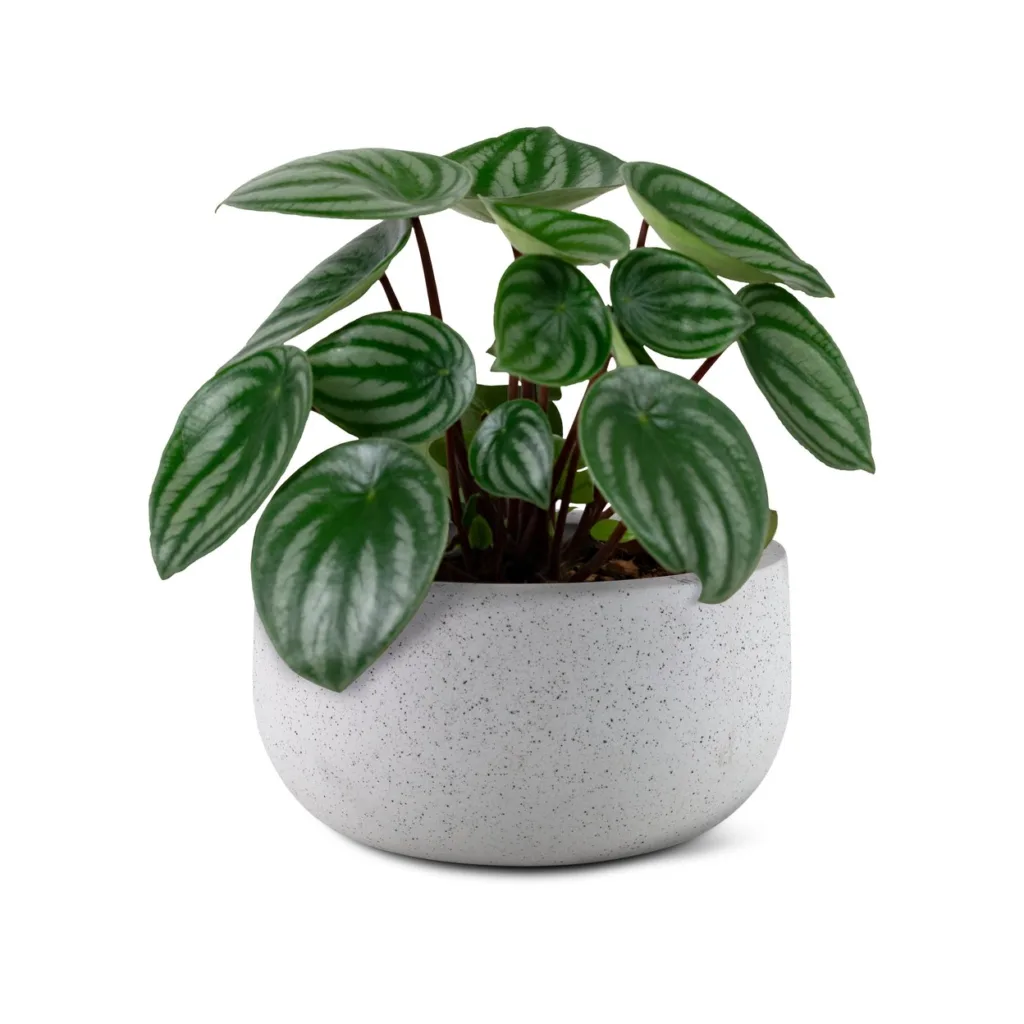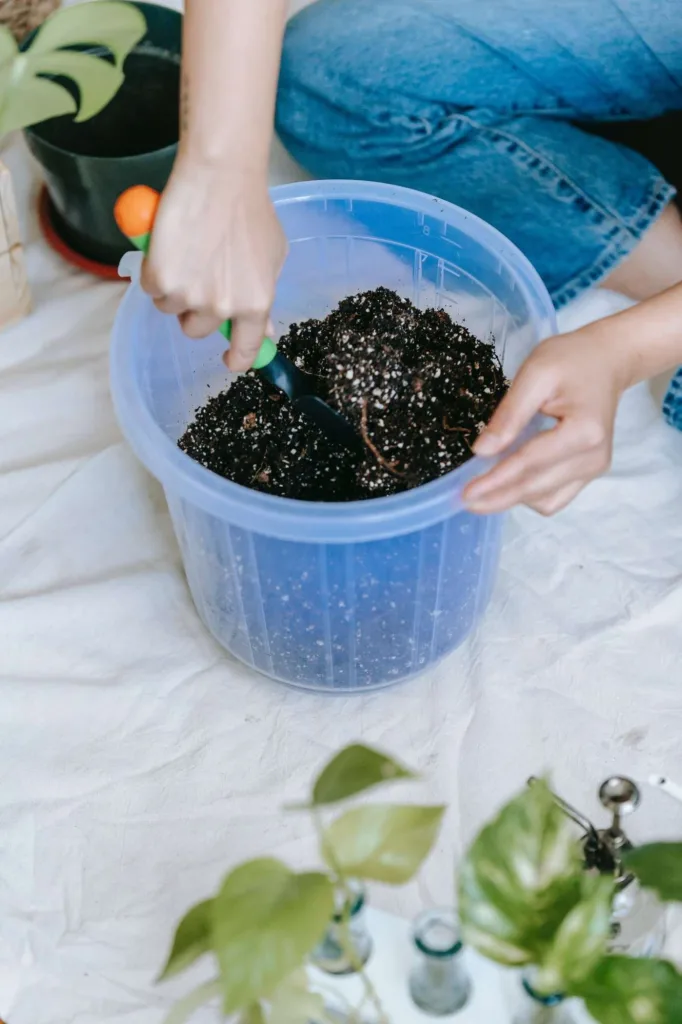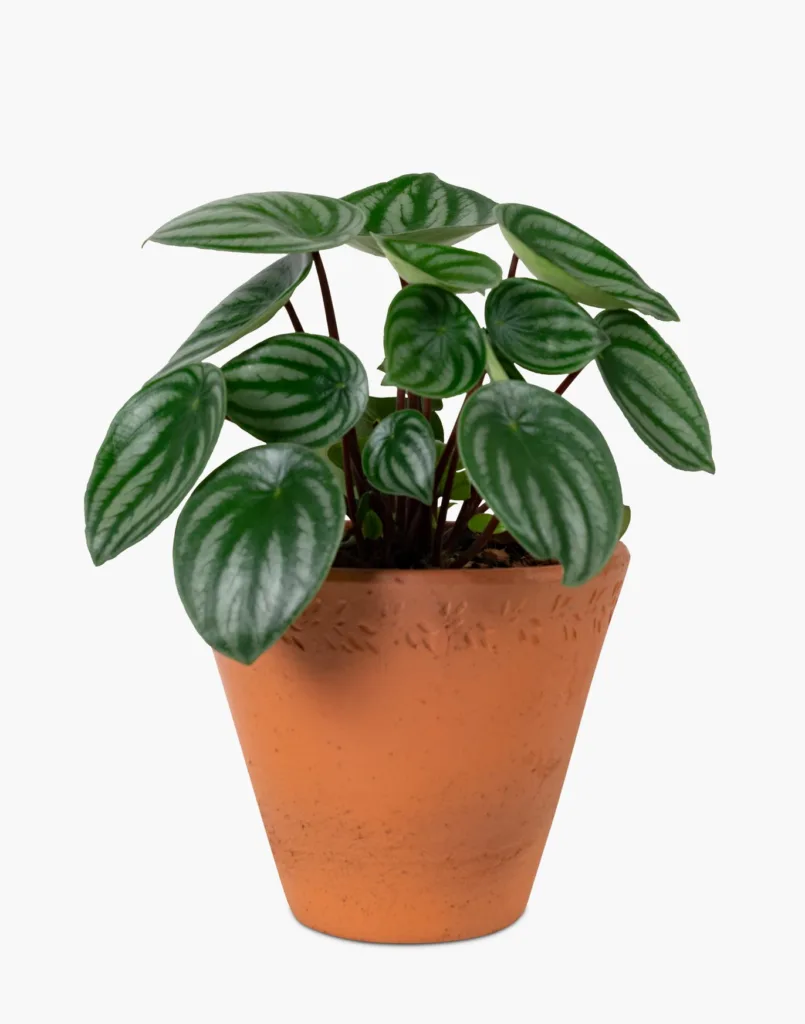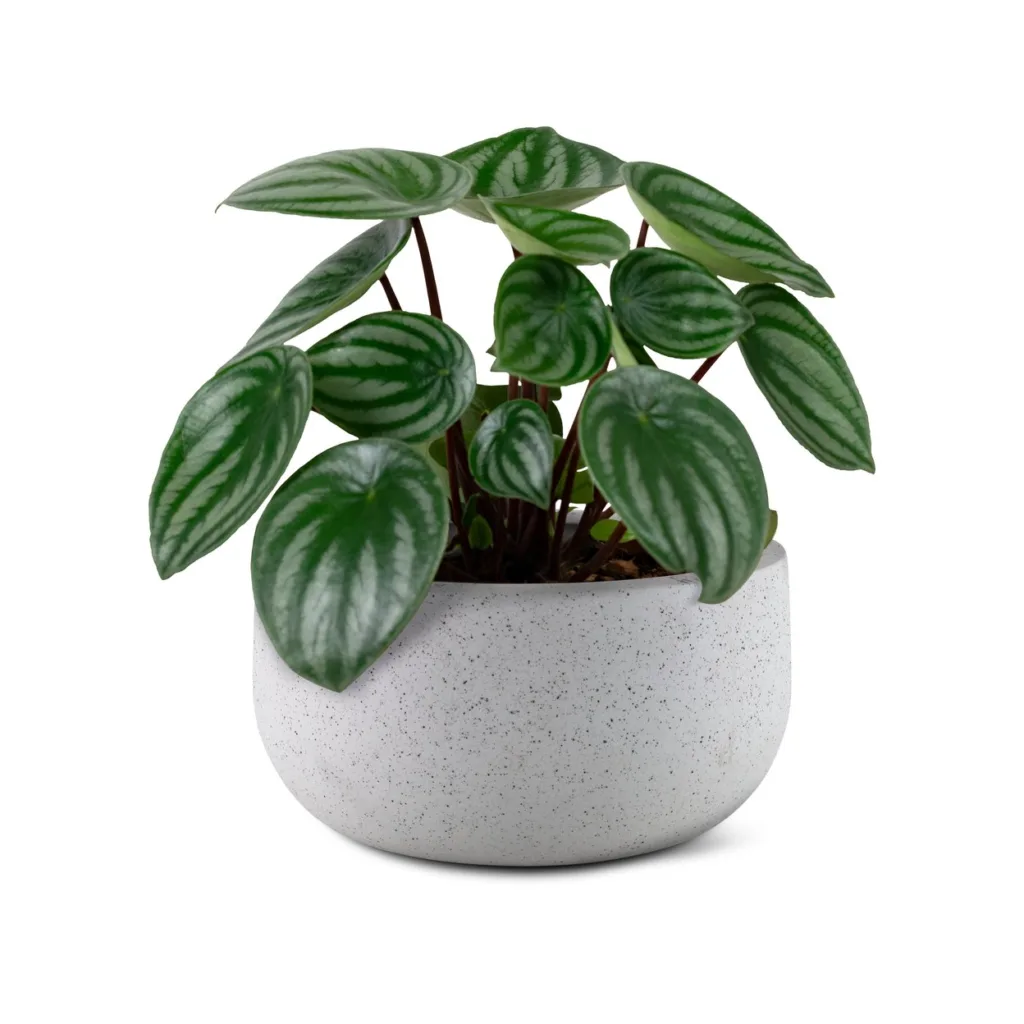Watermelon Peperomia, also known as Peperomia argyreia, is a charming houseplant known for its unique Leaves that resemble the rind of a watermelon.
This plant is native to South America including Bolivia, Brazil, Ecuador, and Venezuela, and makes for a delightful addition to any indoor garden. Are you someone who loves plants and wants to add more to your indoor garden collection?
Or maybe a beginner who wants to start with an easy-to-care plant? If so, you might want to consider getting a Watermelon Peperomia.
With vibrant green and silver markings on its rounded leaves, this houseplant is a visual delight.
But it is also a relatively low-maintenance plant, making it suitable for both experienced plant lovers and beginners alike.

Watermelon Peperomia Care
Watermelon Peperomia is easy to care for and grow as houseplants, Watermelon Peperomia blooms in bright, indirect light.
It prefers a spot near a window with filtered light to avoid direct sunlight, as too much direct sunlight can scorch its leaves.
If your space lacks natural light, don’t worry! You can use artificial grow lights to provide the necessary light for your Watermelon Peperomia.
Ideal Temperature and Humidity
Maintaining the right temperature and humidity levels is crucial for the healthy growth of your Watermelon Peperomia.
This plant prefers temperatures between 65°F and 75°F (18°C to 24°C). Avoid exposing it to drafts or extreme temperature fluctuations.
In terms of humidity, peperomias enjoy moderate to high humidity levels. If your home is particularly dry, especially during the winter months when indoor heating is common, consider using a humidifier or placing a tray of water near your plant to increase humidity levels.
Watering Watermelon Peperomia
Watermelon Peperomias have specific watering requirements that should be met to keep them thriving. They prefer slightly moist soil, but overwatering can lead to root rot and other issues.
To determine when to water, simply touch the top layer of soil. If it feels dry, it’s time to water your plant.
When watering, make sure to provide a thorough soak and allow any excess water to drain out from the bottom of the pot.
Empty the saucer beneath the pot to prevent the plant from sitting in water, which can lead to root rot.

Soil and Potting
Choosing the right soil and potting for your Watermelon Peperomia is essential for its overall health and growth.
Opt for a well-draining potting soil with good aeration. A mix of peat moss, perlite, and coarse sand can work well for Watermelon Peperomia.
When it comes to the pot, select one with drainage holes to prevent water from accumulating at the bottom.
A pot that is slightly larger than the current size of your plant’s root ball will provide ample space for healthy root development.
Fertilizing Watermelon Peperomia
Watermelon Peperomia does not require frequent fertilization, but applying a balanced, water-soluble fertilizer diluted to half-strength can promote healthy growth.
Fertilize your plant once every two to four weeks during the growing season, which usually falls between spring and summer.
During the dormant period in winter, reduce the frequency of fertilization to once every six to eight weeks or simply skip the fertilizer altogether.
Always follow the instructions provided on the fertilizer package for the appropriate usage and dosage.
Propagating Watermelon Peperomia
If you want to expand your Watermelon Peperomia collection or share it with friends, propagation is an excellent option. The easiest and most successful method of propagation for this plant is through stem cuttings.
To propagate your Watermelon Peperomia, here’s what you need to do:
- Choose a healthy stem with a few leaves.
- Using a clean, sharp knife or scissors, cut the stem just below a node (the point where a leaf attaches to the stem).
- Remove the lower leaves from the cutting, leaving a few leaves at the top.
- Dip the cut end of the stem in a rooting hormone (optional but can increase success rates).
- Place the cutting in a moist, well-draining potting mix or a glass of water.
- Keep the cutting in a warm, brightly lit area, away from direct sunlight.
- Mist the cutting occasionally to maintain humidity.
- After a few weeks, the cutting will develop roots and can be transferred to its pot.

Common Problems and Solutions
Like any plant, Watermelon Peperomia may encounter a few problems along the way. Here are some common issues you may come across and how to address them:
Yellowing Leaves
If you notice your Watermelon Peperomia’s leaves turning yellow, it could be a sign of overwatering. Check the moisture level of the soil and adjust your watering routine accordingly.
Additionally, ensure that your plant is not exposed to cold drafts or extreme temperatures, as this can lead to leaf discoloration.
Pests
Watermelon Peperomia is generally resistant to pests, but occasionally, aphids or mealybugs may appear. These pests can be removed by gently wiping the leaves with a damp cloth soaked in soapy water or by using insecticidal soap. Avoid using harsh chemicals that can harm your plant.
Leggy Growth
If your watermelon peperomia starts to become leggy with long stems and thin leaves, it is a sign that the plant is not getting enough light. Move it to a bright spot, preferably near a window with filtered light.
Decorative Tips:
- Decorative Potting:
- Plant Watermelon Peperomia in a decorative pot that complements its vibrant foliage. Consider a hanging basket to allow trailing stems to cascade gracefully.
- Grouping:
- Grouping Watermelon Peperomia with other humidity-loving plants can create a microenvironment with increased moisture, benefiting all plants involved.
Conclusion
Growing and caring for Watermelon Peperomia is a rewarding experience that adds beauty and charm to any indoor space.
By providing the right lighting conditions, proper watering, a well-draining potting mix, and occasional fertilization, you can enjoy the lush and striking Leaves of this delightful houseplant.
Remember to keep an eye out for any common problems and address them promptly to ensure the continued health and vibrancy of your Watermelon Peperomia. So go ahead, bring home this unique plant, and watch it thrive in your indoor garden!
FAQs
Do watermelon peperomia like sun or shade?
- Watermelon Peperomia prefers bright, indirect light. It does well in moderate to low light conditions but should be protected from direct sunlight, which can scorch its leaves.
Does watermelon peperomia like water?
- Watermelon Peperomia likes slightly moist soil but is sensitive to overwatering. Allow the top inch of the soil to dry out before watering. Ensure good drainage to prevent waterlogged soil.
Is watermelon peperomia a lucky plant?
- Watermelon Peperomia is not traditionally considered a lucky plant, but like many houseplants, it is valued for its decorative qualities and ability to thrive indoors with proper care.
Is watermelon peperomia toxic to cats?
- Watermelon Peperomia is generally considered non-toxic to cats. However, it’s always advisable to monitor pets around houseplants and consult with a veterinarian if you suspect ingestion or if your pet shows any adverse reactions.

